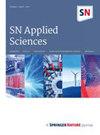Molecular identification and in vitro propagation of the endangered medicinal Cleome droserifolia plant of Saint Katherine
IF 2.4
Q2 MULTIDISCIPLINARY SCIENCES
引用次数: 0
Abstract
Abstract The protectorate of Saint Katherine considers one of the biggest protected areas in Egypt characterized by a unique location and environment. It supports a high number of rare and endangered species. Cleome droserifolia ( Rorida droserifolia ) is an endangered plant found in Saint Katherine, Sinai, Egypt. It has been known for its medicinal uses so it becomes rare due to over-grazing and over-collection for use in traditional medicine, research and trade home use. DNA barcoding analysis and in vitro culture tools were conducted for saving the plant. This research supports the goal number 15 of the United Nations Sustainable Development (SDGs); aimed at preserving, restore and reinstate sustainable usage of terrestrial ecosystems and halting biodiversity deterioration. Two pairs primers of three DNA markers: [ribulose-1, 5-bisphosphate carboxylase/oxygenase large subunit ( rbcL ), maturase K ( matK ) and trnH-psbA ] were used for PCR amplification and sequencing. BLAST results and phylogenetic analysis proved a correct authentication of Cleome droserifolia on both; species and genus levels and confirms the involvement of Cleome droserifolia in Cleome genus. For in vitro propagation, cotyledonary node explants of germinated seedlings were cultured on Murashige and Skoog (MS) medium fortified with 0.27 µM α-naphthaleneacetic acid (NAA), and 2.32 µM of kinetin (Kin). The highest mean number of axillary shoots was 8.16 shoots/explant. 85% of multiple shoots were successfully rooted on ¼ MS medium fortified with 7.42 µM indole-3-butyric acid (IBA). The successfully rooted plants were transferred to a mixture of sand, soil, and peat moss (1: 1: 1) and efficiently acclimatized in the greenhouse.濒危药用植物圣凯萨莲的分子鉴定及离体繁殖
圣凯瑟琳保护区被认为是埃及最大的保护区之一,具有独特的地理位置和环境。它是大量稀有和濒危物种的栖息地。蔷薇花是一种濒危植物,发现于埃及西奈半岛的圣凯瑟琳。它以其药用用途而闻名,因此由于过度放牧和过度采集用于传统医学,研究和贸易家庭使用,它变得罕见。利用DNA条形码分析和离体培养工具进行保存。这项研究支持了联合国可持续发展(SDGs)的第15个目标;旨在保护、恢复和恢复陆地生态系统的可持续利用,阻止生物多样性恶化。采用核酮糖- 1,5 -二磷酸羧化酶/加氧酶大亚基(rbcL)、成熟酶K (matK)和trnH-psbA三种DNA标记的两对引物进行PCR扩增和测序。BLAST结果和系统发育分析均证实了该植物的鉴定是正确的;在种属水平上证实了蔷薇属在蔷薇属中的参与。在离体繁殖中,萌发苗子叶结外植体在添加0.27µM α-萘乙酸(NAA)和2.32µM动素(Kin)的Murashige和Skoog (MS)培养基上培养。平均腋芽数最高,为8.16根/外植体。在添加7.42µM吲哚-3-丁酸(IBA)的¼MS培养基上,85%的多芽生根成功。成功生根的植物被转移到沙子、土壤和泥炭苔藓(1:1)的混合物中,并在温室中有效地适应。
本文章由计算机程序翻译,如有差异,请以英文原文为准。
求助全文
约1分钟内获得全文
求助全文

 求助内容:
求助内容: 应助结果提醒方式:
应助结果提醒方式:


